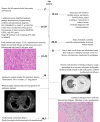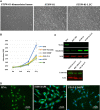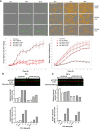WP1066 induces cell death in a schwannomatosis patient-derived schwannoma cell line
- PMID: 35732500
- PMCID: PMC9235848
- DOI: 10.1101/mcs.a006178
WP1066 induces cell death in a schwannomatosis patient-derived schwannoma cell line
Abstract
Schwannomatosis is a rare genetic disorder that predisposes individuals to development of multiple schwannomas mainly in spinal and peripheral nerves and to debilitating chronic pain often unrelated to any schwannoma. Pathogenic variants of two genes, SMARCB1 and LZTR1, are causal in familial cases. However, many schwannomatosis patients lack mutations in these genes. Surgery is the standard treatment for schwannomas but leaves patients with increasing neurological deficits. Pain management is a daily struggle controlled by the use of multiple analgesic and anti-inflammatory drugs. There is a need for both nonsurgical treatment to manage tumor growth and nonaddictive, nonsedative pain control. Because standard clinical trials are exceedingly difficult for patients with rare disorders, precision medicine approaches offer the possibility of bespoke therapeutic regimens to control tumor growth. As a proof of principle, we obtained a bio-specimen of paraspinal schwannoma from a schwannomatosis patient with a germline point mutation in the SMARCB1/INI gene. We created an hTERT immortalized cell line and tested the ability of targeted small molecules with efficacy in neurofibromatosis type 2-related schwannomas to reduce cell viability and induce cell death. We identified WP1066, a STAT3 inhibitor, currently in phase 2 clinical trials for pediatric and adult brain tumors as a lead compound. It reduced cell viability and STAT-3 phosphorylation and induced expression of markers for both necroptosis and caspase-dependent cell death. The results demonstrate feasibility in creating patient-derived cell lines for use in precision medicine studies.
Keywords: chronic pain; neoplasm of the peripheral nervous system.
© 2022 Allaf et al.; Published by Cold Spring Harbor Laboratory Press.
Figures





References
Publication types
MeSH terms
Substances
Supplementary concepts
Grants and funding
LinkOut - more resources
Full Text Sources
Medical
Research Materials
Miscellaneous
